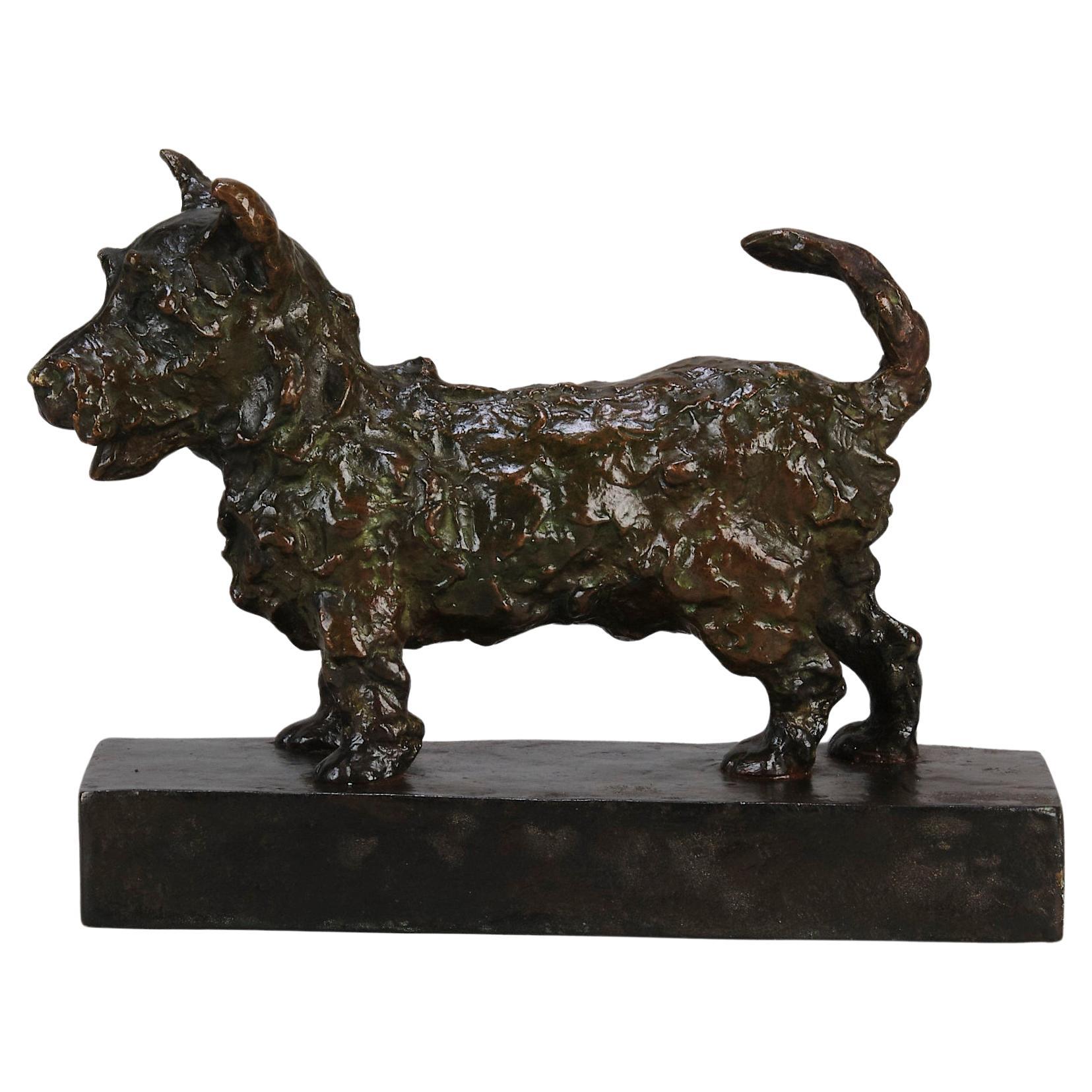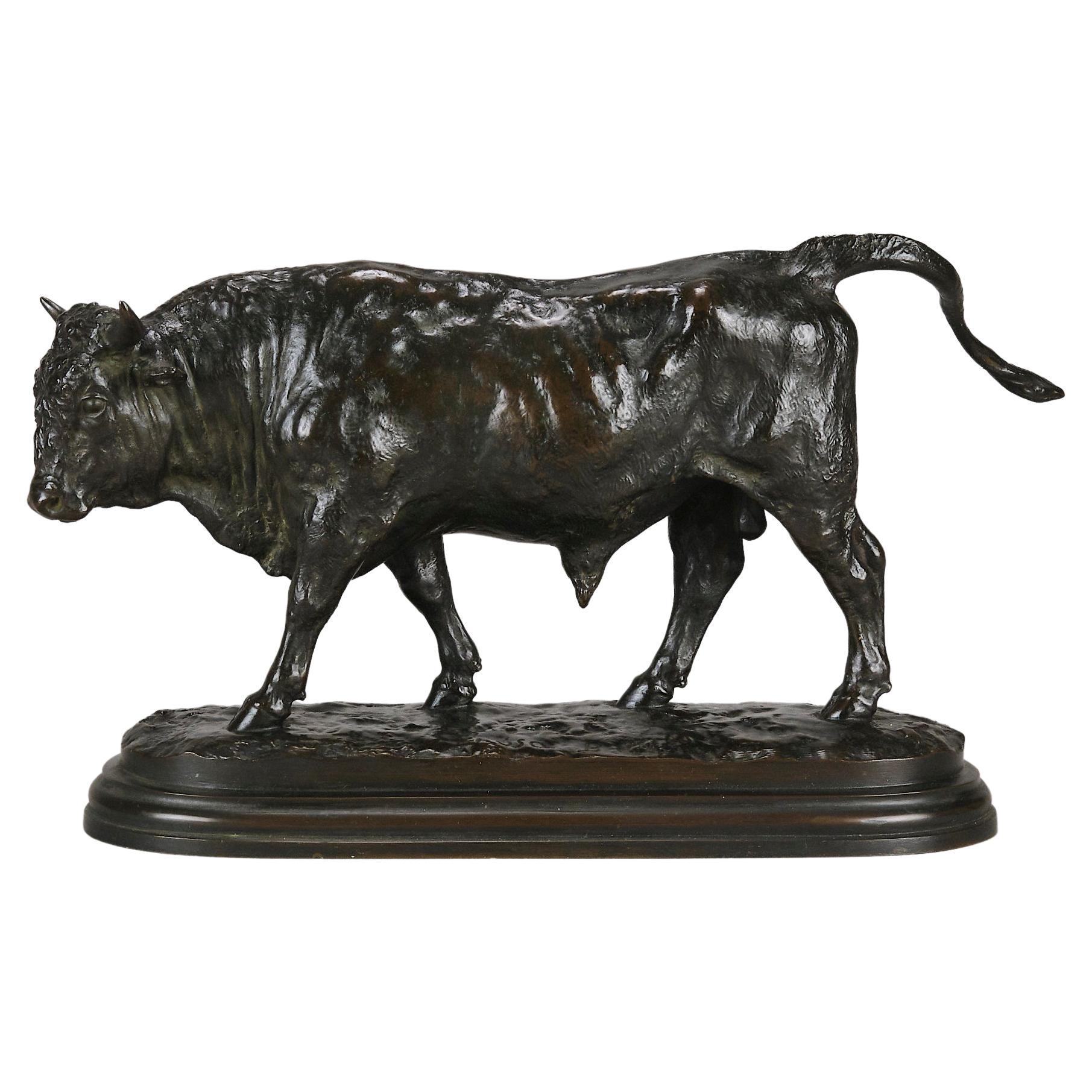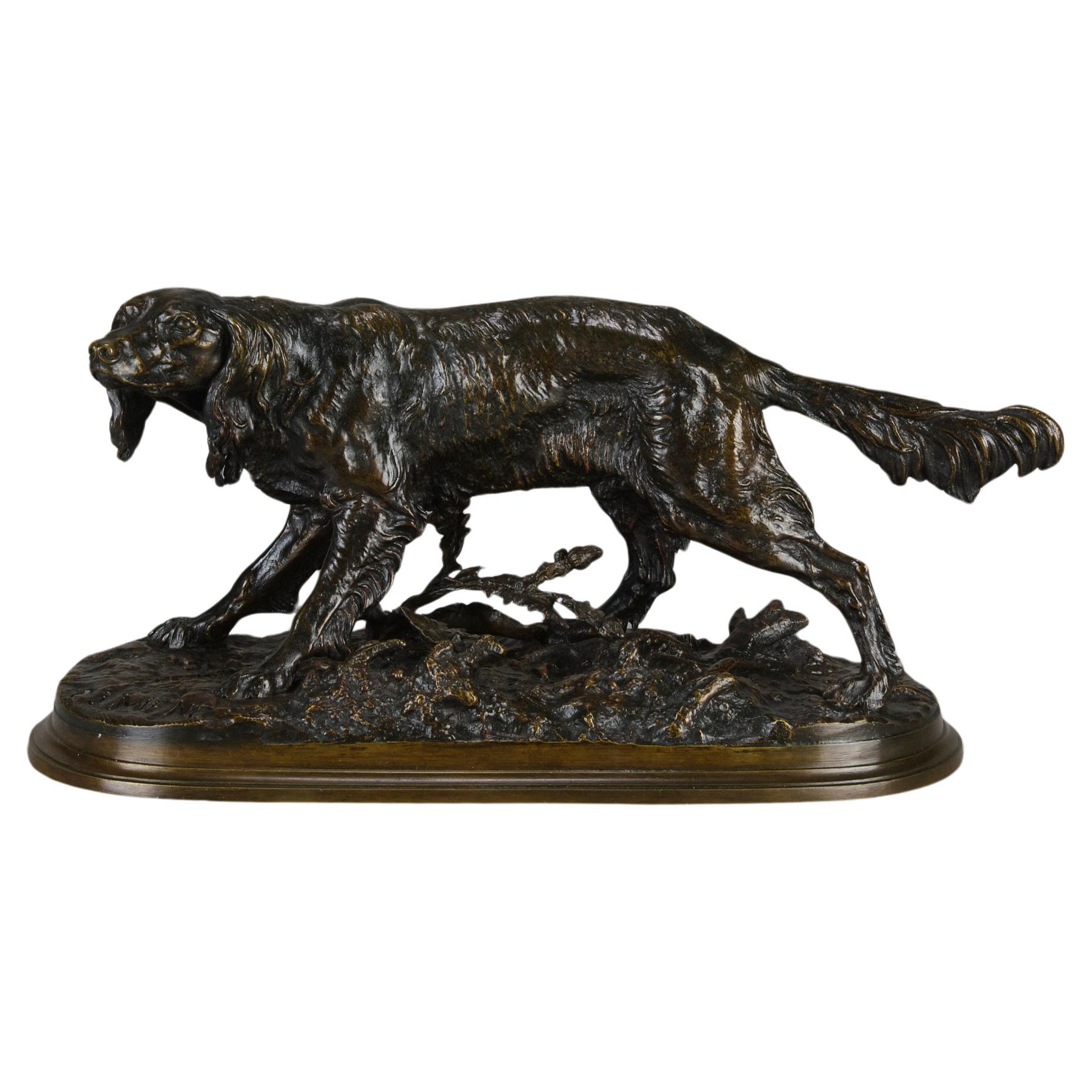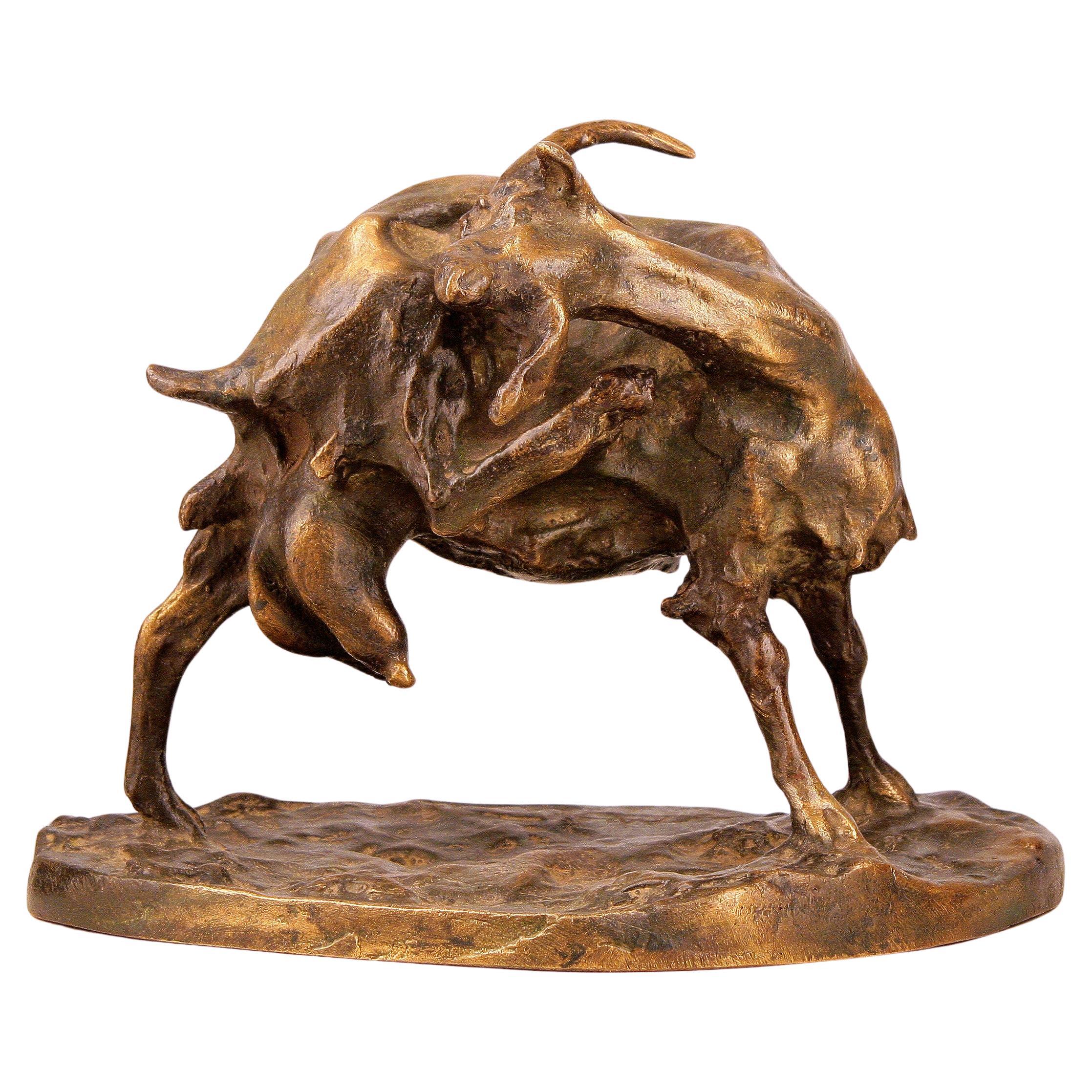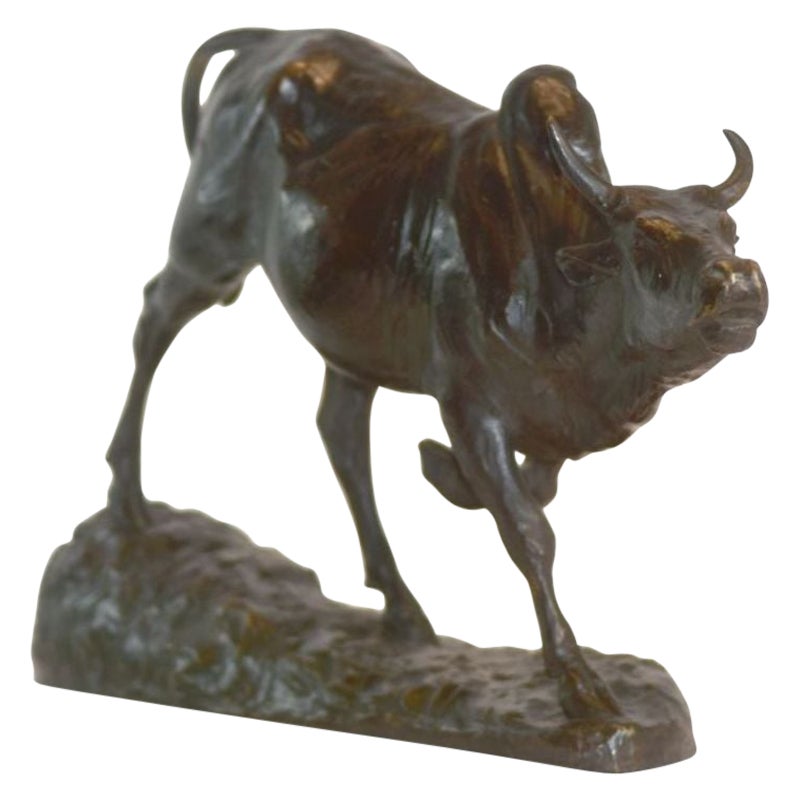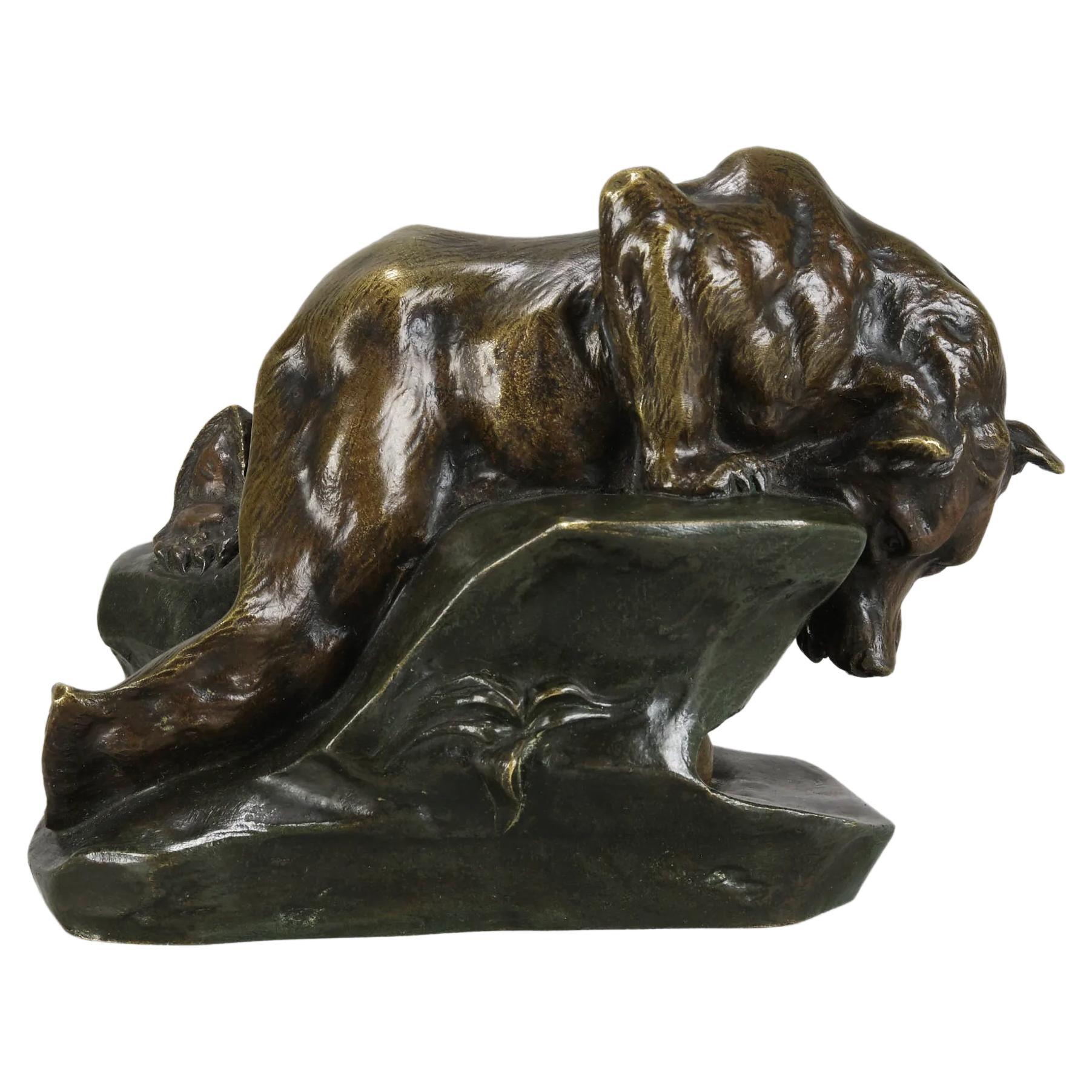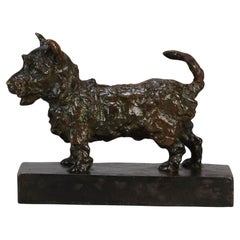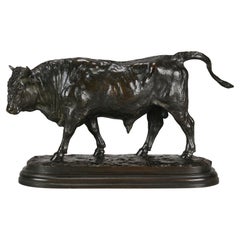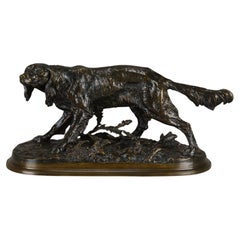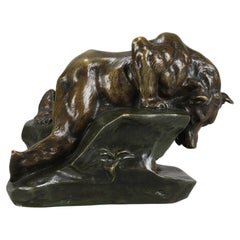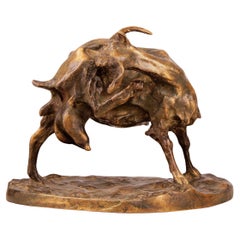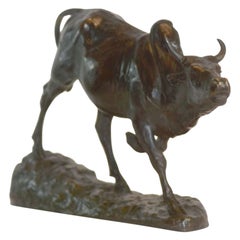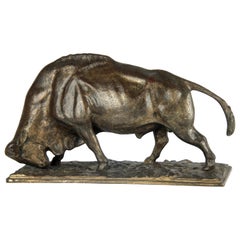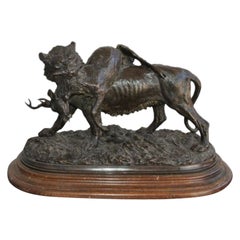Items Similar to Early 20th Century Animalier Bronze Sculpture "Turning Terrier" by Edith Parsons
Want more images or videos?
Request additional images or videos from the seller
1 of 14
Early 20th Century Animalier Bronze Sculpture "Turning Terrier" by Edith Parsons
$3,100.09
£2,250
€2,644.74
CA$4,289.74
A$4,729.35
CHF 2,474.24
MX$58,020.28
NOK 31,145.79
SEK 29,126.24
DKK 19,750.96
About the Item
A charming early 20th Century patinated bronze study of a turning terrier with excellent textured surface detail and colour, raised on a bronze base and signed E B Parsons
ADDITIONAL INFORMATION
Height: 10 cm
Condition: Excellent Original Condition
Circa: 1910
Materials: Bronze
SKU: 9375
ABOUT
Edith Parsons (1878–1956) was an American sculptor renowned for her charming and expressive portrayals of children and animals. Born in Houston, Ohio, she studied at the Art Students League of New York under Daniel Chester French and other prominent artists. Parsons gained early recognition for her playful and tender works, often capturing joyful childhood moments in bronze. Her sculpture Duck Baby (1915) became especially popular, symbolizing innocence and delight. She exhibited widely, including at the 1915 Panama-Pacific International Exposition. Parsons' work remains celebrated for its warmth, vitality, and sensitive observation of her youthful subjects.
- Dimensions:Height: 3.94 in (10 cm)Width: 7.09 in (18 cm)Depth: 7.49 in (19 cm)
- Style:Art Nouveau (Of the Period)
- Materials and Techniques:
- Place of Origin:
- Period:
- Date of Manufacture:1910
- Condition:Wear consistent with age and use.
- Seller Location:London, GB
- Reference Number:Seller: 93751stDibs: LU3216345325622
About the Seller
5.0
Vetted Professional Seller
Every seller passes strict standards for authenticity and reliability
Established in 1936
1stDibs seller since 2017
84 sales on 1stDibs
Typical response time: <1 hour
- ShippingRetrieving quote...Shipping from: London, United Kingdom
- Return Policy
Authenticity Guarantee
In the unlikely event there’s an issue with an item’s authenticity, contact us within 1 year for a full refund. DetailsMoney-Back Guarantee
If your item is not as described, is damaged in transit, or does not arrive, contact us within 7 days for a full refund. Details24-Hour Cancellation
You have a 24-hour grace period in which to reconsider your purchase, with no questions asked.Vetted Professional Sellers
Our world-class sellers must adhere to strict standards for service and quality, maintaining the integrity of our listings.Price-Match Guarantee
If you find that a seller listed the same item for a lower price elsewhere, we’ll match it.Trusted Global Delivery
Our best-in-class carrier network provides specialized shipping options worldwide, including custom delivery.More From This Seller
View AllEarly 20th Century Bronze Sculpture entitled "Standing Terrier" by Edith Parsons
Located in London, GB
An endearing early 20th Century patinated bronze study of a standing terrier with excellent textured surface detail and colour, raised on a bronze base and signed PB Parsons
ADDITI...
Category
Early 20th Century American Art Nouveau Animal Sculptures
Materials
Bronze
19th Century Animalier French Bronze Entitled "Taureau Debout" by Rosa Bonheur
By Rosa Bonheur
Located in London, GB
"Taureau Debout" by Rosa Bonheur.
An excellent late 19th Century French animalier bronze study of a standing bull with fine hand chased surface that accentuates the muscle definition of the subject, signed Rosa B.
ADDITIONAL INFORMATION
Measures: Width: 32 cm
Height: 18 cm
Depth: 11cm
Condition: Excellent Original Condition
Circa: 1870
Materials: Bronze
Book reference: Animals in Bronze by Christopher Payne
Page no. 174
DESCRIPTION
Bonheur, Rosa (1822-1899)
The most popular artist of nineteenth-century France, Rosa Bonheur was also one of the first renowned painters of animals and the first woman awarded the Grand Cross by the French Legion of Honor. A professional artist with a successful career, Bonheur lived in two consecutive committed relationships with women.
Born on March 16, 1822 in Bordeaux, Marie Rosalie Bonheur was the oldest of the four children of Raimond Oscar Bonheur (1796-1849) and Sophie Marquis. Bonheur's father was an art teacher who came from a poor family, while her mother, a musician, had descended from a middle-class family and had been her husband's art student.
Bonheur's father, who taught drawing and landscape painting, was an ardent member of the utopian Saint Simeon society.
The group held idealistic beliefs about the reform of work, property, marriage, and the role of women in society. Most importantly, for the artist's future, the Saint Simeons questioned traditional gender norms and firmly believed in the equality of women. While teaching artistic techniques to his oldest daughter, Raimond Bonheur also encouraged her independence and taught her to consider art as a career.
In 1828 Raimond Bonheur joined the Saint Simeons at their retreat outside Paris. Sophie and the children joined him in Paris the following year. Four years later, however, Raimond abandoned his family to live in isolation with his fellow Saint Simeons.
Sophie Bonheur died in 1833 at the age of thirty-six. Rosa was only eleven years old when her mother died, but she was aware of the heavy price her mother paid for married life with a man who was more dedicated to his own ideals than to meeting his family's needs. Rosa also saw that her mother's marriage led to poverty and her death from exhaustion.
After her mother's death, Bonheur was taken in by the Micas family who resided nearby. Mme Micas and Bonheur's mother had been friends. When Mme Bonheur died, the Micas family paid Raimond Bonheur's debts and cared for Rosa. Their daughther, Nathalie, who would later become an amateur inventor and unschooled veterinarian, and Rosa became enamored with each other.
When Rosa Bonheur began her career as a professional artist, she had already been trained by her father who had allowed her to study in all male classes. Rosa also learned by sketching masterworks at the Louvre from the age of fourteen, and later, by studying with Léon Cogniet.
From the very beginning, Bonheur's favorite subject was animals. She learned their anatomy completely by dissecting them in local slaughterhouses. She also visited the horse market two times a week. Study of animals by direct observation led to the formation of the realist style in which Bonheur worked.
It was for such work that Bonheur obtained written permission from the French government to wear men's slacks. Her working attire also consisted of a loose smock and heavy boots that protected her feet from the dangerous environment in which she painted. The style of dress that the artist adopted for work and home may well have been influenced by her father's attire, which was based on St. Simeonian clothing experiments. Bonheur also cropped her hair, perhaps to facilitate her work. She did, however, always wear dresses for social occasions because she knew that appropriate dress would further her career.
Bonheur earned a successful living as a painter of animals. She exhibited at the annual Paris Salon regularly from the age of nineteen in 1841 through 1853, when she was thirty-one. She won the salon's gold medal at the age of twenty-six in 1848 and was commissioned by the French government to paint Plowing on the Nivernais in 1849. In the same year Bonheur and her sister Juliette became directors of l'École gratuite de dessin pour les jeunes filles, a post their father had once held.
Bonheur completed her most renowned work, The Horse Fair, in 1855. The successful representation of percherons (a breed native to Normandy) was purchased by Ernest Gambart, a London art dealer whose gallery specialized in work by French artists. He exhibited The Horse Fair in London where Bonheur visited with Nathalie. Queen Victoria requested a private viewing of the painting at Windsor Castle. It would later be purchased in 1887 by Cornelius Vanderbilt and donated to the new Metropolitan Museum of Art in New York City.
Bonheur's trip to England allowed her to meet Charles Eastlake, then President of the Royal Academy, John Ruskin, the English writer and critic, and Edwin Landseer, the British animalier. She also toured the English and Scottish countrysides and executed some paintings based on her observations of new breeds of animals found there.
Gambart made engravings of Bonheur's work, including The Horse Fair, and sold them in England, Europe, and the United States. Bonheur became one of the most renowned painters of the time. Little girls, such as Anna Klumpke in the United States, even had dolls in her likeness, much as American girls played with Shirley Temple dolls...
Category
Antique 19th Century French Art Nouveau Animal Sculptures
Materials
Bronze
19th Century Animalier Bronze Sculpture entitled "Medor" by Pierre Jules Mene
By Pierre Jules Mêne
Located in London, GB
An excellent mid 19th Century Animalier bronze study of a setter in an alert turning pose with very fine rich brown patina and intricate hand chased surface detail, raised on natural...
Category
Antique Late 19th Century French Art Nouveau Animal Sculptures
Materials
Bronze
Animalier Bronze Sculpture Entitled "Bear and Rabbit" by Charles Paillet
By Charles Paillet
Located in London, GB
An amusing early 20th Century bronze group of a bear peering over the edge of a rock at a rabbit quietly hiding under a ledge, with excellent rich brown patina and fine hand chased surface detail. Signed Paillet
ADditional information
Measures: Height: 18 cm.
Condition: Excellent Original Condition.
circa: 1910.
Materials: Patinated Bronze.
ABOUT
Charles Paillet
Charles Paillet (French, 1871 ~ 1937) Paillet studied sculpture under Georges Gardet. Paillet’s first exhibit was in the Salon of 1897 and he exhibited regularly until 1921. Most of his works were cast by the foundry Thiebault Freres both in lost wax and by the sand-cast method. A few of his works have been recorded bearing the F. Barbedienne foundry mark also. Charles Paillet, Georges Gardet, Rene Paris...
Category
Early 20th Century French Art Deco Animal Sculptures
Materials
Bronze
Late 19th Century Animalier Sculpture entitled "Terrier" by Alfred Dubucand
By Alfred Dubucand
Located in London, GB
A wonderful late 19th Century Animalier bronze study of a standing terrier with its head raised and ears pricked in an alert position with excellent rich brown autumnal patina and fine hand chased surface detail, signed Dubucand
ADDITIONAL INFORMATION
Height: 11 cm
Condition: Excellent Original Condition
Circa: 1880
Materials: Bronze
Book reference: Animals in Bronze by Christopher Payne
SKU: 9206
ABOUT
Dubucand Terrier
Alfred Dubucand (25 November 1828 – 1894) Dubucand was born in Paris and was a French animalier sculptor of the 19th century. His works were often entered into the annual Salon art exhibition in Paris where he contributed works over the course of his career. He was one of the prize pupils of Antoine-Louis Barye. Dubucand made his debut at the 1867 Salon with a wax model of a dead pheasant, a rather inauspicious start when considering the higher quality sculptures he would submit later in his career. He modelled mainly animal groups, producing a number of deer, dog, and horse sculptures. His better casts feature a warm, mid-brown patination, sometimes coming in even lighter shades bordering on a very light yellow, being nearly the colour of the bronze metal itself. He frequently experimented with chemical patinas, learning the patination process from his teacher and mentor Barye who stretched the boundary with his now famous dark green patinas. Dubucand paid strict attention to the anatomical detail of his subjects, often being so concise that he actually showed the veins in the legs of his deer and elk...
Category
Antique Early 19th Century French Art Nouveau Animal Sculptures
Materials
Bronze
Late 19th Century Animalier Bronze Sculpture "Cheval Arabe No.3" by Pierre Jules
By Pierre Jules Mêne
Located in London, GB
"Cheval Arabe No.3" by Pierre Jules Mene
An attractive late 19th Century Animalier bronze study of an arab stallion. The bronze exhibiting excellent hand chased surface detail and g...
Category
Antique 19th Century French Art Nouveau Animal Sculptures
Materials
Bronze
You May Also Like
Patinated Bronze Early 20th Century Sculpture of Goat by Italian Ernesto Bazzaro
By Ernesto Bazzaro
Located in North Miami, FL
Patinated bronze early 20th century sculpture of goat by italian sculptor Ernesto Bazzaro
By: Ernesto Bazzaro
Material: bronze, copper, metal
Technique: cast, molded, polished, pati...
Category
Early 20th Century Italian Bohemian Animal Sculptures
Materials
Metal, Bronze, Copper
Egyptian Cow Animal Bronze Dated 1911 Signed Robert Bousquet (1894-1917)
By Robert Bousquet
Located in Marseille, FR
19th century animal bronze signed Robert Bousquet (1894-1917) dated 1911 representing a humped Egyptian cow called gamus Dimension length 53 cm for 31 cm high and 13.5 cm deep.
Addi...
Category
Antique 19th Century Animal Sculptures
Materials
Bronze
20th Century Bronze Sulpture, Signed by Th. V. Rijswijck
Located in Esbeek, NL
A rare, fine quality 20th century bronze model of a "bull" by Thierry van Rijswijck. (Belgium 1911-1958)
Thierry V. Rijswijck was a successfull animal sculptor in de 20th century.
Category
Early 20th Century Belgian Animal Sculptures
Materials
Bronze
Bronze Animal Deer and Fawn Late 19th Century Signed Fratin
By Christophe Fratin
Located in Marseille, FR
Late 19th century animal bronze signed Fratin representing a wild animal having captured a young deer. Bronze mounted on wooden terrace Dimension height 29 cm for a length of 45 cm a...
Category
Antique Late 19th Century Animal Sculptures
Materials
Bronze
Vienna bronze, bull, high-quality bronze figurine. Ca. 1900s/1910s
Located in København, Copenhagen
Vienna bronze, bull, high-quality bronze figurine.
Presumably by Franz Bergmann.
In excellent condition with a nice patina.
Austria, circa 1900/1910s.
Dimensions: Width 24 mm x Heigh...
Category
Early 20th Century Austrian Animal Sculptures
Materials
Bronze
French Bronze Bull and Dog
By Charles Valton
Located in Queens, NY
French bronze figure of bull with attacking dog on an oval base (Valton) (19/20th Cent.)
Category
Antique 19th Century French Animal Sculptures
Materials
Bronze
$12,000
More Ways To Browse
Terrier Antique
American Art Nouveau Furniture
Parsons Bronze
Bronze Sculpture Baby
Bronze Terrier
Royal Elephant
Vintage Blue Glass Swan
Vintage Giraffe
1960s Italy Dog
Art Deco Gazelle
Art Deco Seal
Austrian Bronze Cats
Belgian Horse
Flying Horse
French 19th Century Wooden Horse
French Wood Carved Animals
Glass Black Panthers
Iittala Glass Birds
